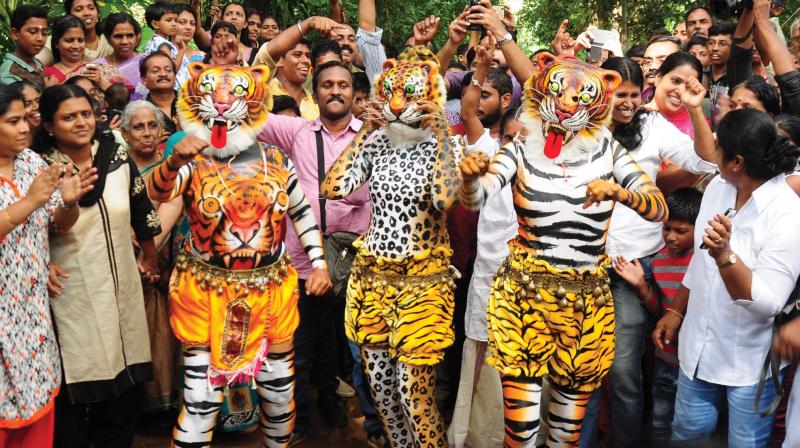But where's pennonam?'
J. Devika writes how her memories are devoid of gleeful woman faces who celebrate Onam with fervour.

Does Onam have a gender? That might seem a startling question to my generation perhaps, fed as we were on the popular song about Emperor Maveli’s paradise of peace, joy, and equality, in which no such divisions are mentioned. It does mention the welfare of children, and that is probably one reason why as a child I always thought that Onam was meant to make children happy. In my childish imagination, Onam involved only Maveli and children; the new clothes our parents bought us were not really their gifts but his. Even the funny images of the Emperor were for children, I thought, so that we would not be turned off by royal gravitas. Onam, then, was gendered, but its gendering was complicated: involving ajolly old king who did not mind being portrayed as a clown for the sake of his little subjects who were still not subsumed by gender.
In hindsight, it feels strange how seldom women appear in my memories of Onam. The most vivid memory I have is of the happy golden sunlight dancing on leaves lush and verdant after the monsoon. Human beings come only after, and astonishingly, senior female relatives appear the last. That is indeed something to ponder about – why is it that women in my family who were definitely the people who supervised the celebration, least remembered? I do remember the sweat-streaked faces of female helpers, anxious, quickly finishing off the chores in our kitchen to hurry home to cook their own sadyas. I also remember poorer female relatives arriving to help with Onam preparations, their faces writ with another kind of anxiety, seeking some kind of responsibility or the other which would make them feel wanted. Onam was a time when all these women worked hard – their labours often started days back, and some of them made it to the pond for a quick dip only after the sadya was ready to be served. Even those who did not labour so, like the senior matriarchs, had the responsibility of making sure that we children were supplied with an endless supply of snacks of all sorts – raw tapioca chips fried to a mellow shade that could well rival the Onam sun, rice-and-jaggery balls, hard as rocks, flower-shaped crisp acchappams, and the rest. Never did they receive any credit in my memory, so invisible they were, and their labours taken for granted.
Looking around now during Onam-time, it is clear that things have changed. Women are no longer Maveli’s invisible helpers; rather, their bodies form an important site on which Onam announces it arrival. All over real and virtual space in Kerala, you see images of women, young and old, dolled up in traditional Kerala sarees and covered with jewellery, having a great time doing mostly nothing. However disgusting the aesthetics of consumption-drivenOnam may be,It seems that women, of the new consuming elite at least, are no longer expected to do domestic labour on Onam; all they are required is to celebrate a certain cultural belonging manly through clothes. And nowadays sadyas are even ordered from caterers, murmur the fuddy-duddies.
Surely, this sartorial demand is not innocent. But my heart is gladdened when I see young migrant Malayali women workers deck themselves in grand style for this one golden day looking less belaboured and actually happy – in the hospitals of remote north Indian towns, in convents in distant South America, in the parks of Dubai, in the dull offices in Kerala where they labour underpaid and rarely recognized. Of course, children and Nature have been banished and I am alienated from Onam forever. Yet I am proud when I see that now, exceptional cases apart, even the most-disadvantaged of workers in Kerala, the female domestic workers, insist on planning ahead for Onam and prioritizing their family feasts over their employer’s. Kerala is definitely not the hell-hole that Hindutva vaad is project in their slanderous diatribe against us. That the poor in Kerala no longer slave for the rich despite the rich growing richer all this while is important. Let the Hindutva vaad is obsessed with Indo-Gangetic barbarism and unmindful of their own poverty-stricken millions go heal themselves first.
(The writer is associate professor, Centre for Development Studies, Thiruvananthapuram)

